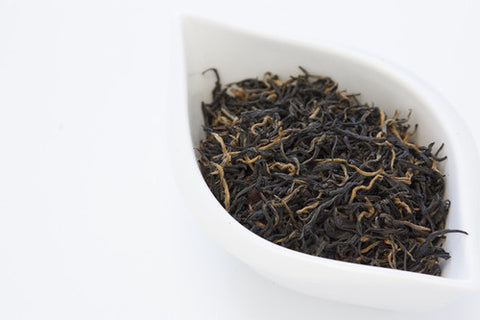There's so much we can tell you about these teas that will enhance your tea discovery. Let's start with some essentials of two of the teas that may be less familiar to some.
Japanese vs. Chinese green tea
Sencha is the most commonly drank tea in Japan. Flower scented teas, like Jasmine, have been around in China for centuries.
In Japan, tea leaves are harvested from Spring to Fall. Sencha is the smaller, young leaves plucked earlier in the year. (Bancha is made from more mature leaves). Chinese tea leaves, on the other hand, are harvested only in Spring, so the leaves are all plucked early.
To prevent oxidization* of the harvested leaves, Japan uses a steaming process. After steaming, the leaves are dried and rolled. Take a look at your Sencha leaves and notice the distinct needle shape from that process. The taste is intensified because the rolling causes juices in the leaf to be released. Chinese teas are more likely to be pan-fired to prevent the leaves from oxidizing. This is exactly what it sounds like - a pan is used to fire the leaves.
Early plucked Sencha has a luminescent green colour, strong aroma and pronounced sweetness. You'll notice a fresh grassy quality as well. Chinese green tea produces a yellowish green liquor and a flavour that is varying degrees of toastiness.
*Oxidation is like the browning of an apple exposed to oxygen in the air. Think of green tea as the freshly sliced apple and black tea as the brown apple.
Alternate Steeping Methods
Pineapple Sencha
Small Vessel:
You can use near boiling water for this tea, just let it cool ever so slightly.
Use a small steeping vessel, like a Kyusu. The important thing is that the steeping vessel holds about 4oz of water without leaving too much empty space. Fill the vessel with hot water to warm it for steeping.
Take a heaping teaspoon of the tea into the teapot. Pour 4oz of water and let it steep for a quick 30 seconds. Don't throw away the leaves because you can resteep this!
Second steep: fill the teapot with another 4oz of water and re-steep the sencha leaves for 15 seconds.
You can re-steep for as long as the flavour holds up to your personal preferences.


Cold Brew Method (you really must try this!)
- Grab your iced tea jug. Measure how many cups of water the jug is.
- Measure 1.5 teaspoons of tea per cup of water into the jug.
- Fill the jug with room temperature water.
- Chill in the fridge for 4-10 hours.
Terminology
Gold Tips, as one of our featured teas is named, refers to the small, unopened leaves of the tea plant. This is the new growing shoot of the tea plant and it appears golden in the blend. A tea with a lot of golden tips is referred to as "tippy". Tippy teas have a sweeter flavour than non-tippy black teas. You'll notice in the Organic Black Gold Tips tea, there is a sugar cane or maple sweetness to the tea.

If you have any questions about these teas or the other two teas in the March subscription box, please comment below and I'll respond as best I can.Stay tuned for more info and photos for this month. Follow us on social media to be notified of new posts. (Twitter, Instagram, Facebook) You can also sign up for our newsletter below to get direct notifications of new content.
